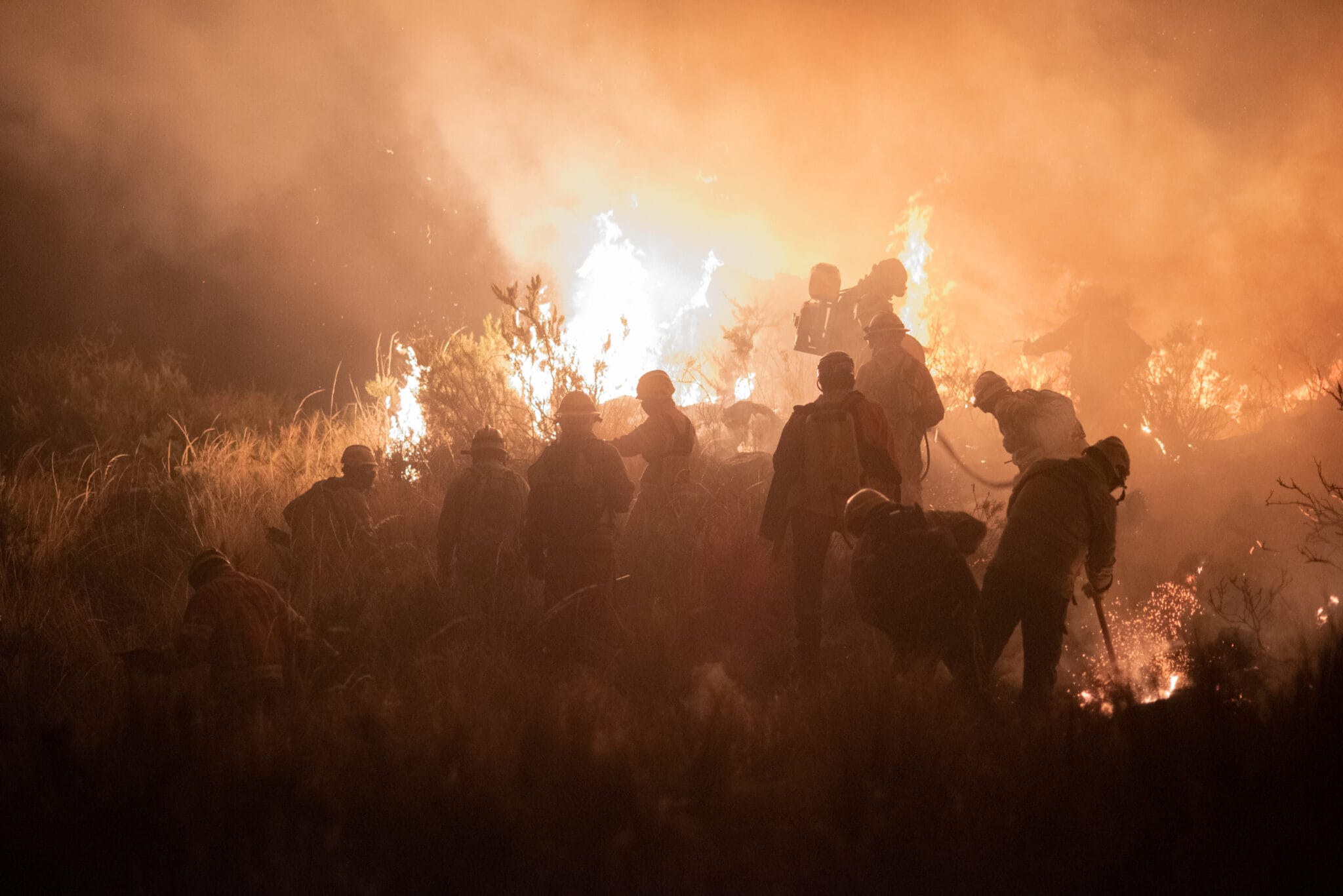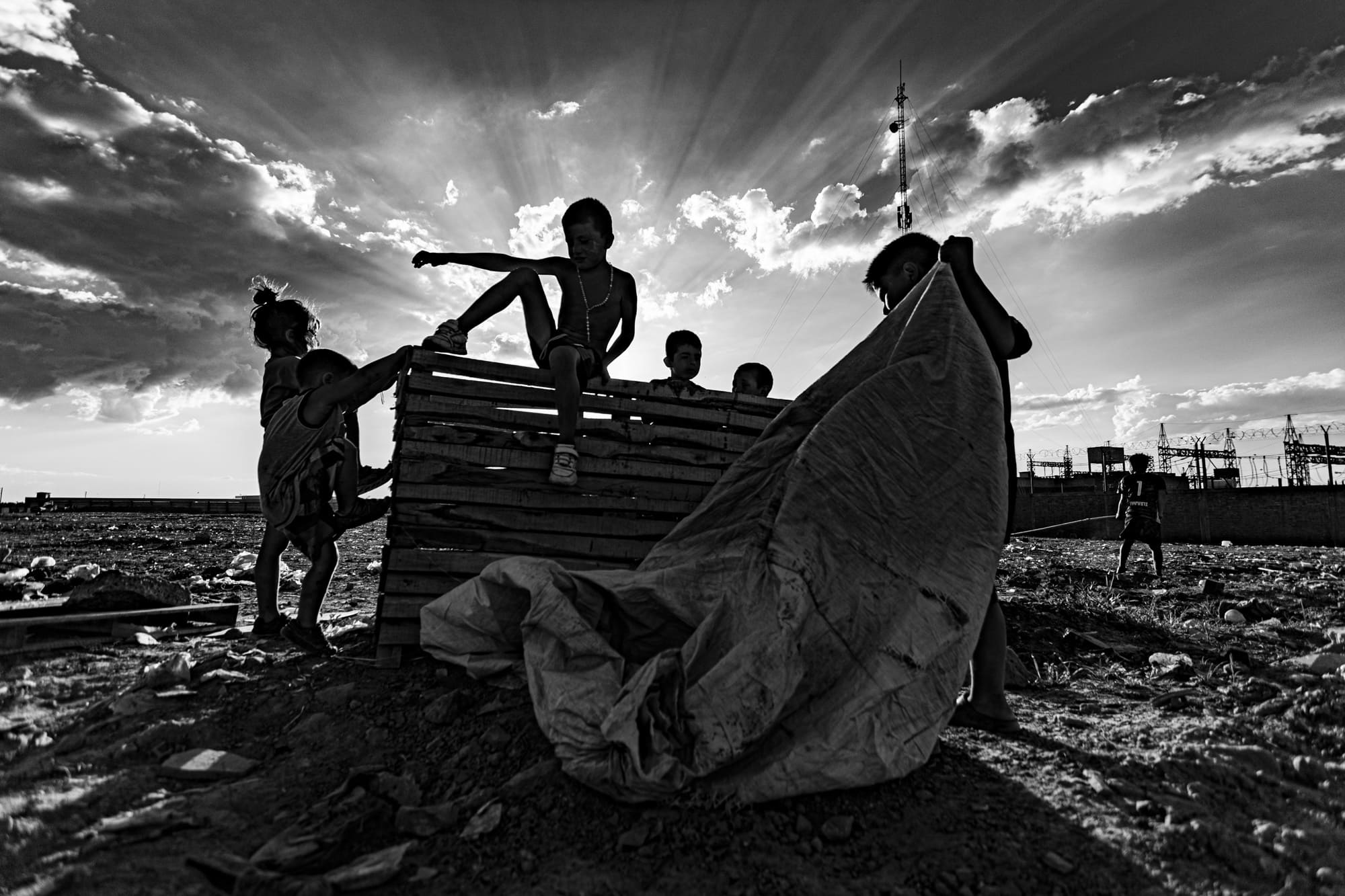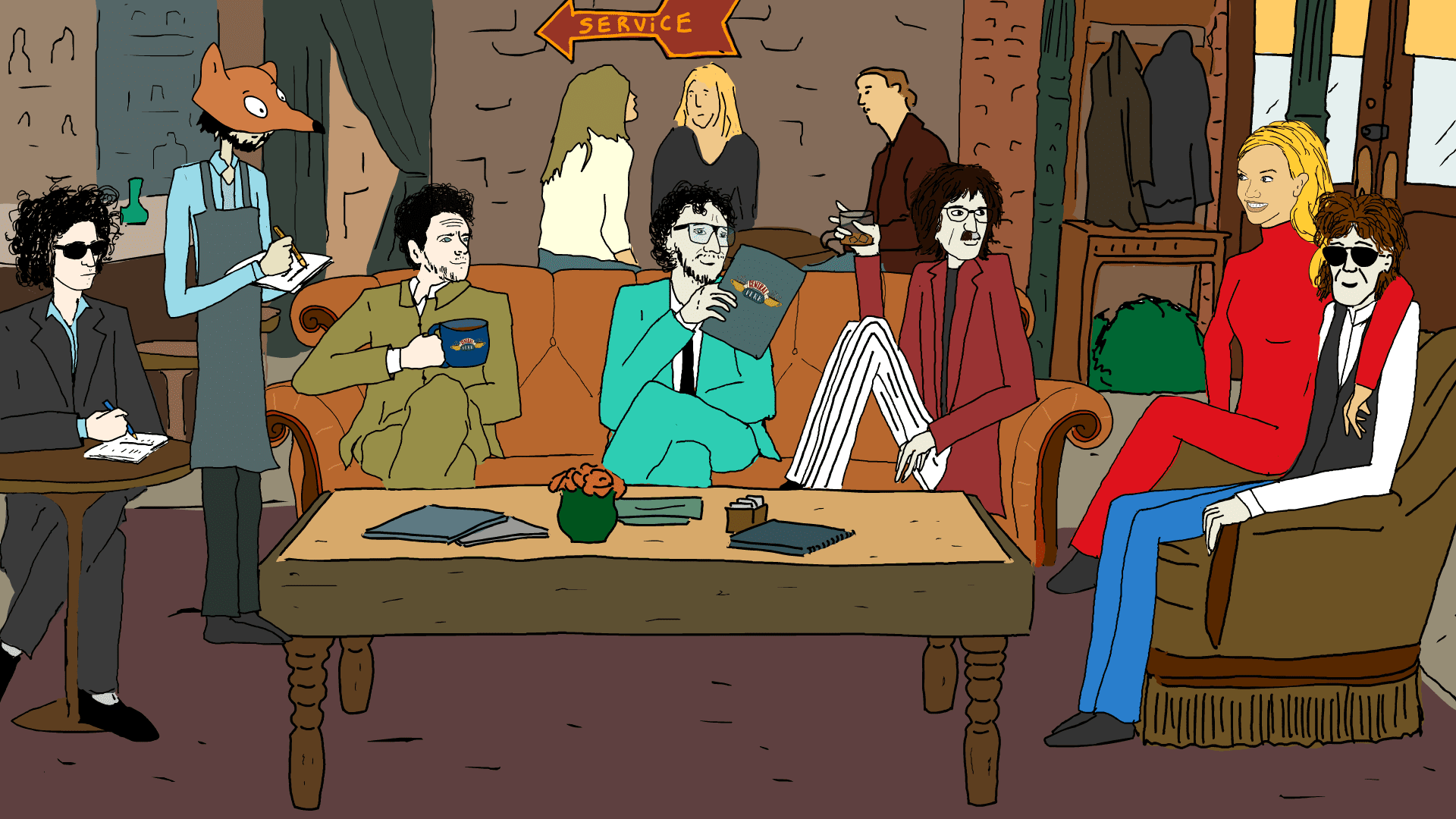
And in front of us, the forest burned
In Guardianes del Fuego, Argentine photographer Natalia Roca documents the work of the Community Forestry Brigades of the Sierras de Córdoba, dedicated to firefighting in an area undergoing an acute socio-environmental crisis. Roca’s images show the extreme risk to which these people are exposed. Still, they are also a celebration of their work: an invisible job that the State does not support in a context in which the corporate world benefits from the devastation.
By Alonso Almenara
Recognized as a photographer and activist, Natalia Roca did not begin her journey in photography seeking to express herself: she did it by chance, recording the intimacy of friends’ weddings to get out of a hurry. “I was a very young mother, and I found in this profession a way of economic sustenance,” she recalls. The passion for the image of this 47-year-old Argentine author would come much later: precisely when, in 2008, she became a mother again.
“I began to research the subject of respected childbirths, document them, and get involved in activism for women’s rights and the visibility of obstetric violence. With that work, I understood that photography interests me, not only as a language but also as a tool for activism”. That experience led her to train in workshops and connect with Sub Cooperativa, a famous collective of Argentine photographers. “There, I learned a lot, had access to new references, and was polishing my look.”
Guardianes del fuego is the result of that search. This ongoing project documents the (invisible) work of the Brigadas Forestales Comunitarias de las Sierras de Córdoba (Community Forestry Brigades of the Mountain Ranges of Córdoba) and their collective organization processes in the face of socio-environmental conflicts such as forest fires.
The loss of native forest in the province of Córdoba – the second most populated in Argentina after Buenos Aires – is critical and is due to many factors: mainly the advance of the agricultural frontier with transgenic crops, intensive cattle ranching, real estate businesses, and connectivity routes such as highways. Fires play an essential role in this context: in most cases, they are provoked and are used as a tool for deforestation and land use change. Due to the influence of high temperatures and global climate change, they are also becoming faster, more aggressive, and more difficult for humans to control.
The Community Forestry Brigades emerged as a self-managed alternative to face this problem. Made up of organized groups of neighbors, they carry out combat tasks, repair actions, reforestation, and dissemination of the socio-environmental conflict in their localities. It is voluntary work that does not receive technical or financial support from the Argentine State: an activity, in addition, highly risky, undertaken by citizens mobilized for the defense of the forest in the face of the abandonment of the authorities.
In 2020, Natalia Roca joined one of these brigades and has documented their work. That year, forest fires devastated more than 300,000 hectares of native forest in Córdoba. This province has only 3% of native forest in exemplary conservation. It was an ecological cataclysm comparable to the fires in the Western United States that occurred during the same period.
Roca’s photographs are striking because they record the brigades in action: they show the risk to which these people are exposed and the intense preparation and care with which they carry out their daily tasks.
What motivated you to create the Guardianes del Fuego project?
Córdoba is at a critical moment: the mountain range is being devastated by agribusiness, real estate developments, and forest fires, which are generally used to enable land use for agriculture or other developments. The big fires of 2020 significantly impacted me because I live in a mountainous area and saw the mountain in front of my house burn for a week. It was a terrible feeling of helplessness. My backyard burned. And many neighbors went to put out the fire, and we started to organize.
I became part of a forestry brigade in my town, and that same year I was trained in safe behavior for fighting forest fires. It was very tough training, and there, I realized the importance of the brigadistas’ work. In the second session, I started to take my camera and record those meetings attended by neighbors, and common villagers, to learn how to fight fires. Why? Because the State is not doing anything about it since the destruction facilitates the arrival of new businesses. The fire departments, on the other hand, protect the homes of families and individuals, but the forest is left to burn.
The forestry brigades are born with the impulse to protect the native forest. They do not work in cities or towns: they are people who are prepared to walk for hours in the woods until they find a fire and put it out.
I was trained as a brigadier and am still one today. Since 2020 I have been more of a brigadista than a photographer. I have been in practice and fighting fires, and many of the images I have captured have been in a direct firefighting context.
To what extent have you felt in danger during your work as a brigadier?
It is a risky situation: the work of forest brigades is considered one of the most dangerous in the world. But even before I joined a unit and trained, I found myself in quite a risky situation the first time I went to log fires in 2020. I was half-locked in my car between fire breaks that the firefighters made. The fire was very close to our row of vehicles: it was not foreseen, and nobody told us the escape routes.
Since I have been a brigadier, we are constantly training to avoid this situation. We do diagnostics according to a protocol called the Risk Management System, in which we assess the risks and then draw up a plan to fight the fire in the safest possible way.
“It must be known that the brigadiers are trained people: I want to break the stereotype that they are the hippie neighbors who will put out the fire. They have organized people acting according to international safety protocols. They are actors who are very connected to their communities, to the real needs of the people who inhabit the territories.”
Let’s talk about your photographic treatment of the brigade’s activity. What are you interested in capturing in these images?
What interests me is to make the forest brigades visible as relevant actors in the fight against fires. Beyond the fact that their communities nourish the brigades’ spirit and do not want to belong to the institutions because they work with other codes, the State does not recognize them and even hinders their work. It must be known that they are trained people: I want to break the stereotype that they are the hippie neighbors who will extinguish the fire. They are organized people who are acting according to international security protocols and are actors who are very connected with their communities, with the real needs of the people who live in the territories.
I understand that the project is still in development. What direction do you plan to take with this photographic series?
Last year, as a result of some situations of gender violence that occurred in certain brigades, we women brigadistas began to organize ourselves, and that is how the Union of Women Brigadistas was born. I told myself here is a story to tell and presented it to National Geographic, who gave me a grant to develop the project.
The initiative of the brigadistas of Córdoba is exciting: we meet in an organization called Fuegas to discuss our care strategies, taking into account that, although gender violence can exist in any organization, it is often exacerbated in precarious contexts due to the emotional component that these situations arise. The stress of firefighting can lead people to overreact excessively; in such moments, gender-based violence can flare up even more.
Witnessing the birth of a women’s brigade is very enriching and very nice. And at the same time, we are discovering other similar experiences, such as in the Amazon, where indigenous women’s brigades exist. I find what is happening with this movement of response, resistance, and resilience in defense of the territories, the forest, and the jungles very encouraging—an effort deployed in Argentina and the world.
E·CO/23]
This work is one of the inspirations for E-CO/23], the new edition of our meeting of photographic collectives, which this year will have as its thematic axes: Ecologies, Territories, and Communities.
Through this call, we are interested in gathering stories of sustainable development, community movements, and ways of inhabiting the land in the community to achieve new narratives built from the plurality of collective creation.
Each selected project will receive support of 5,000 euros for its production. The tasks can be presented by existing collectives or by groups of people working in collaboration for this project in an interdisciplinary way.
The selected groups will participate in a collective process of production and reflection that will be accompanied by pedagogical support with specialists in the themes.
Once the production stage is completed, the project results will be presented in one or more exhibitions that may rotate and on the digital platforms of Fundación VIST, the AECID, and the participating Spanish Cultural Centers or the institutions they designate. The aim is to consolidate networks for creating and circulating visual narratives in Ibero-America.


